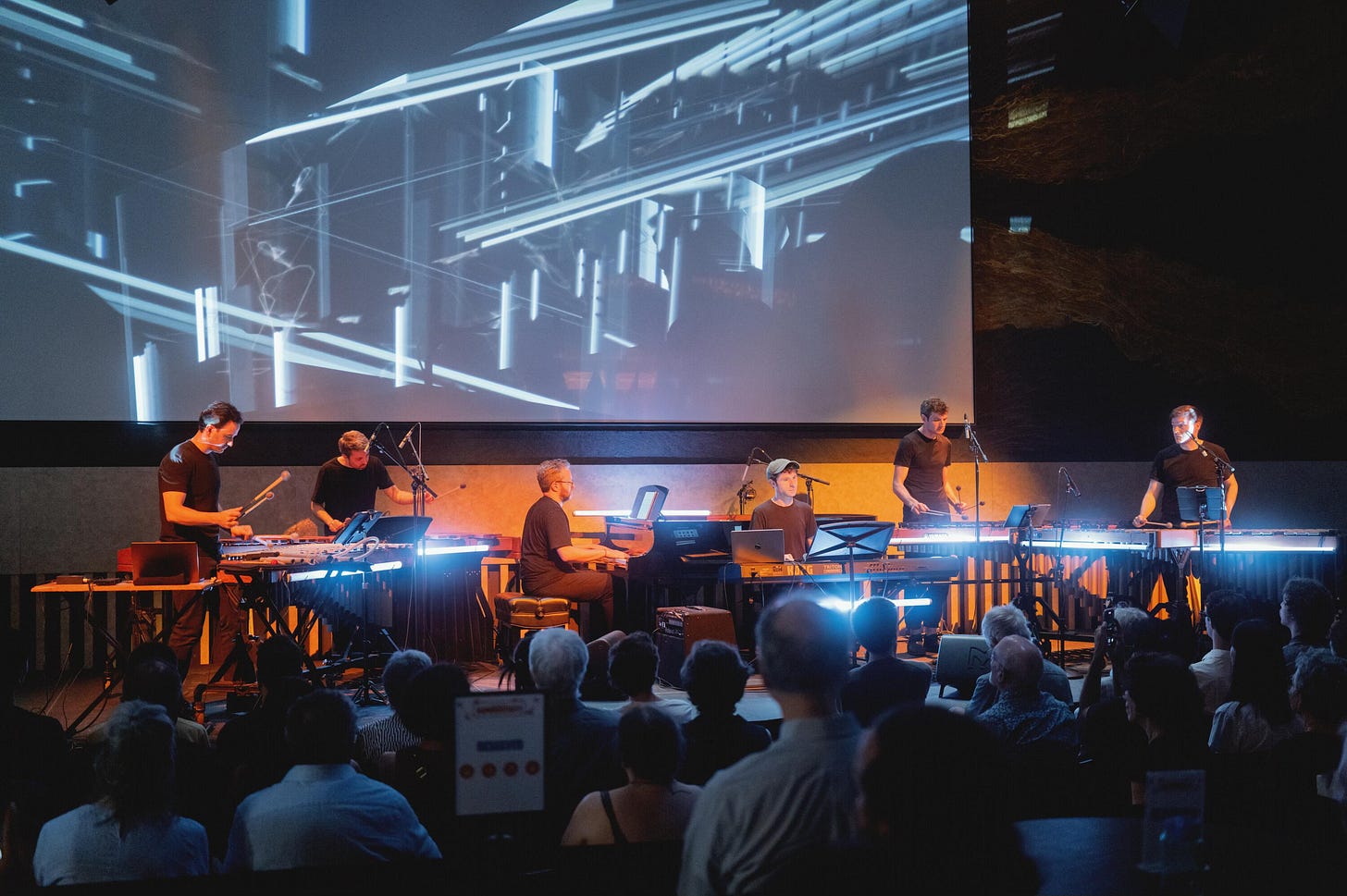Terry Riley is 90 Years Old
His 90th circuit around the sun concluded this past Tuesday, and one of the celebrations was at Roulette (I covered it for the New York Classical Review). Claire Chase played sections from his wonderful ongoing The Holy Liftoff, and then Zach Layton’s and Nick Hallet’s Darmstadt New Music organization delivered a near riotous In C. And you can watch the whole thing here:
In C Wednesday night was very different than the more atmospheric In C at the Long Play festival in May, which is part of the genius of the music. Different every time but recognizable as the same thing, that’s something every piece of notated music should aspire to.
Riley is one of the original minimalists, although as I write in my upcoming book (excerpted below for full subscribers), that’s more accidental than anything else. In C is the first minimalist composition and a model for many others going forward, including the one immediately below, but he wasn’t thinking about minimalism in terms of time and process. He’s been clear that In C is an expression of shamanism, and the music he went on to play in his Keyboard Studies, Rainbow in Curved Air, etc is repetition as dervish, metaphysical transformation.
Canto Ostinato
In C is made up of 53 modules of music. Dutch minimalist Simeon ten Holt (1923-2012) used modules to make Canto Ostinato, one of the profound masterpieces of minimalism. Canto Ostinato hits a nexus of pulse, structure, and the kind of impersonal but powerful expression of Reich with Philip Glass’ use of harmony and counterpoint. It belongs in company with In C, Music for 18 Musicians, Drumming, Einstein on the Beach, Music in Twelve Parts, and Atlas.
You know how you can stroll across a beautiful landscape toward a horizon that continually recedes even as it compels you onward? That’s Canto Ostinato. It starts with a repeated, hypnotic five-note pattern in the bass (the “ostinato”), with lines gradually coming in on top. The process is in the layers, the harmonic tension and resolution they add, how they increase in density (it can be played solo, by two pianists, four, six, etc.) and in the duration, which can be anywhere from forty minutes to several hours. The harmonies come in lovely waves, there’s a fabulous melody that emerges around the middle.
Wednesday evening, Sandbox Percussion and keyboardists Matthew Aucoin and Conor Hanick played the piece in the David Rubenstein Atrium as art of the Run Amoc* festival. This was a superb performance, slightly on the quick side but coming in at what felt like a perfectly timed and proportioned 80 minutes. Transitions were just sublime, like having the universe shift around you, and the musicians used dynamics to build more drama than in any other performance I’ve heard. If you couldn’t make that, or don’t know it, here’s another excellent performance lead by pianist Jeroen van Veen (the absolute man when it comes to minimalist pianism, and he also recorded all 840 repetitions of Vexations, which is a wild listening experience):
SUBSCRIBER SPECIAL OFFER! New annual subscriptions through Labor Day will be eligible for a drawing to win one of three fabulous CD sets of Steve Reich or Philip Glass, including the Reich Works: 1965-1995 set and the collection of Glass’ Symphonies Nos. 1-10. See the details in the middle of this newsletter.
My only income right now comes from writing and editing, and in America, writers can starve. So your subscriptions are meaningful. And many, many thanks to those who have recently subscribed, you literally made it possible for me to buy groceries and pay the ConEd bill.
And for you full subscribers, here’s the In C excerpt from my Minimalist Music book:
Keep reading with a 7-day free trial
Subscribe to Kill Yr Idols to keep reading this post and get 7 days of free access to the full post archives.



